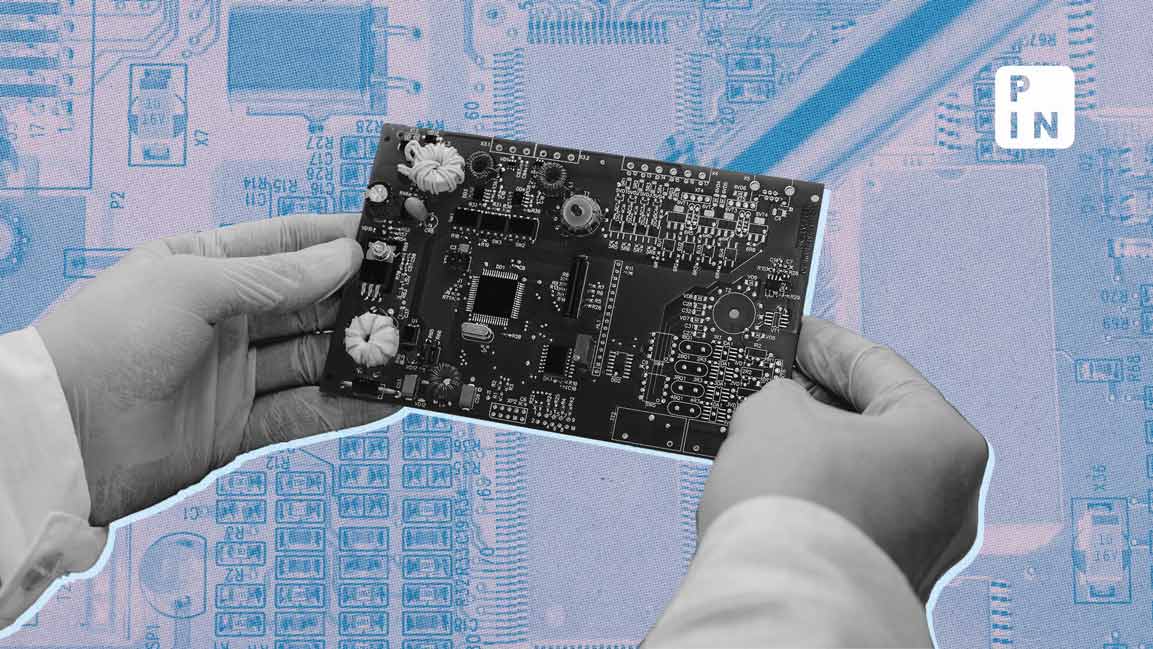- | 1:00 pm
Fiscal support seen helping boost Indian electronics parts sector
Reducing reliance on China by rationalizing import tariffs, and integrating into global value chains will help local firms grow, says report

Providing fiscal support to Indian manufacturers of electronic parts rather than imposing tariffs on imports will help local companies grow, industry lobby Confederation of Indian Industry (CII) said in a report.
In recent years, product assembly activities have surged, driven by electronics manufacturing services activities, on soaring demand in sectors such as mobiles, automotive, industrial, and telecom. This rapid expansion of production capacities heavily relied on importing components and parts.
With large capacities in China and limited domestic capabilities, India has become significantly dependent on imports, the CII report, titled ‘Developing India as the Manufacturing Hub for Electronics Components and Sub-Assemblies’, said.
China contributes to 62% of India’s imports of electronic components, posing a substantial risk to the long-term sustainability and the supply chain necessary for developing a competitive domestic manufacturing ecosystem.
India’s electronics industry is at a vantage point and must swiftly shift from relying on importing and assembling to manufacturing components that add more value, the report said, adding that this change requires creating an environment that supports large-scale production of high-potential parts such as semiconductors, printed circuit boards, displays and sensors.
The report recommends fiscal support to certain manufacturing sectors at a rate of 9%, lasting a decade, to help these sectors grow and improve their products’ value.
It’s also crucial for India to integrate into global value chains (GVCs), which can lead to greater market access, technology transfers, and increased foreign investment, the report added.
Semiconductors are now a major part of the cost of electronic products, and India is just starting to build its own industry, the report said, while pointing out that there is a benefit in focusing on simpler parts and components, which make up to 80% of the cost of electronics, as they need less investment and can be set up faster.
Therefore, there is a compelling reason for policymakers to support these types of manufacturing to help India become a key global supplier, it added.
Last year, the production of electronics such as mobiles, tablets, and wearables in India reached $41.7 billion, with some estimates projecting the market to soar to $255.1 billion by 2030.
The reliance on imported parts for these products highlights the urgent need for India to boost local production of these essential components, the study said.
Manufacturers of camera and display modules in India have set up production facilities that currently meet about 25% of the country’s demand for these parts. Similarly, manufacturers of enclosures, or the outer casings for electronics, meet only 20% of the domestic demand, indicating a large gap between what is produced in India and what is needed, and showing that the country still heavily relies on imports for these components.
The report pointed out that India’s import tariffs are not only higher than competing economies of Vietnam and China but they also cover a larger set of components, making it challenging for the nascent domestic industry to achieve global competitiveness.
“There is an urgent need to rationalize the import tariffs on priority sub-assemblies and components like camera modules, display modules, mechanicals, to match the tariffs levied by Vietnam and China. Majority of tariff lines should be restricted below 5%,” the report said.
India’s trade agreements are also primarily with low consumption and high production countries, leading to limited opportunities for exports and a trade deficit, it added.
Importantly, the report stressed on the importance of government financial assistance due to the low cost of investment relative to the returns in component production
Pointing to the other challenges, the report said the manufacturing costs for Indian companies are 10%-15% higher than those of similar companies in China and Vietnam. This cost difference makes it more expensive for Indian manufacturers to produce goods compared to their competitors in these countries.
The domestic industry’s minimal investment in research and development (R&D) and lack of significant intellectual properties result in lower revenue and manufacturing potential, attributed to the small scale of component production, the report said, adding that as scale increases, R&D is expected to naturally follow.
Besides, foreign investors face numerous challenges, including obstacles in the seamless movement of personnel, equipment, and materials, which increase operational costs, the report added.












